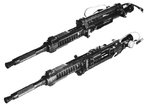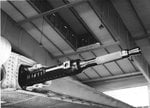davebender
1st Lieutenant
Popular histories often bad mouth the 20MM MG FF cannon. But was it really that bad during 1939 to 1941, when it was superceded by the superior MG151/20?
MG FF.
26 kg.
60 round drum magazine. Later a 90 round drum magazine.
540 rounds per minute.
700 mps velocity for 20mm mine shell.
MG151/20.
42 kg.
Belt feed.
740 rounds per minute.
805 mps velocity for 20mm mine shell (same projectile as MG FF).
The German 20mm mine shell contained 18.6 grams of HE filler. Three times as much as early model HS.404 cannon shells.
700 mps velocity is probably more then adequate for typical fighter combat ranges of 200 meters or less during the early WWII period. The 20mm mine shell was very powerful so you don't need to spray for long if you are on target.
MG FF.
26 kg.
60 round drum magazine. Later a 90 round drum magazine.
540 rounds per minute.
700 mps velocity for 20mm mine shell.
MG151/20.
42 kg.
Belt feed.
740 rounds per minute.
805 mps velocity for 20mm mine shell (same projectile as MG FF).
The German 20mm mine shell contained 18.6 grams of HE filler. Three times as much as early model HS.404 cannon shells.
700 mps velocity is probably more then adequate for typical fighter combat ranges of 200 meters or less during the early WWII period. The 20mm mine shell was very powerful so you don't need to spray for long if you are on target.



 70 = 4900 for about a 27% increase in kinetic energy.
70 = 4900 for about a 27% increase in kinetic energy.